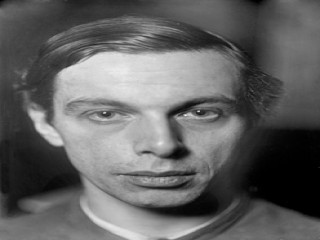
Ernst Ludwig Kirchner biography
Date of birth : 1880-05-06
Date of death : 1938-07-15
Birthplace : Aschaffenburg, Germany
Nationality : German
Category : Arts and Entertainment
Last modified : 2011-04-15
Credited as : Expressionist painter, woodcut series Peter Schlemihl , Graphic Art
The German expressionist painter Ernst Ludwig Kirchner sought to give form to subjective impressions through vehement renderings of nature, tempered by an emphasis on compositional structure that constantly increased in significance as he matured.
Born on May 6, 1880, in Aschaffenburg, Ernst Ludwig Kirchner spent most of his childhood in Chemnitz. Following his parents' wishes, he began to study architecture in 1901 at the Dresden Technical High School, but much of his attention was given to painting symbolistic Jugendstil works. In Munich in 1903-1904 to continue his architectural studies, he familiarized himself with paintings by Albrecht Darer and Rembrandt. A major influence on Kirchner was the neo-impressionist exhibition of 1904.
On his return to Dresden, Kirchner met Fritz Bleyl, Erich Heckel, and Karl Schmidt-Rottluff, who were also painters studying architecture. After Kirchner received his diploma in architecture in 1905, the four artists set up a common studio and organized themselves as the Brücke (bridge). Intellectually greatly influenced by Nietzsche, they considered themselves an artistic, bohemian elite having as their mission the salvation of German art. In the Brücke program Kirchner wrote: "With faith in the future, in a generation of creators as well as supporters, we call all youth together. And as the youth carrying the future, we shall gain elbow room and breathing space in opposition to the stale, old powers. Whoever immediately and truthfully reproduces his own drive to creation belongs to us." Working closely together, the painters evolved a common style dependent on neo-impressionism, Vincent Van Gogh, and Edvard Munch. Since 1904 Kirchner had been creating woodcuts inspired by Felix Vallotton and the German Renaissance artists, and his colleagues adopted the technique; Kirchner, in turn, learned wood carving and lithography from them.
Before disbanding in 1913, the Brücke had been joined by Emil Nolde, Max Pechstein, Otto Mueller, Cuno Amiet, and Kees van Dongen. Van Dongen provided a significant contact with the French Fauve painters, who had a similar interest in effects of immediate expression. The changes Kirchner's painting style underwent as he came to terms with non-Western art served to divorce his work from the other Brücke painters as he attained a personal style after he moved to Berlin in 1911. While Indian Buddhist painting and African sculpture became the two major sources of his new vocabulary of nervous, jagged forms, the streets of Berlin and the fashionable life of the city became a new motif, joining earlier themes of landscapes, portraits, nudes, and dancers.
Kirchner enlisted in the army when war broke out in 1914, but military training soon resulted in a nervous breakdown. Released from service, he entered a sanatorium in Konigstein am Taunus, for which he painted a series of murals (destroyed) and where he created his woodcut series Peter Schlemihl (1916). To continue the cure from his alcohol-and narcotic-induced crisis, Kirchner moved to Davos, Switzerland, in 1917 and turned to the Swiss Alps and themes of peasant life for his paintings and prints. Except for brief trips, he never returned to Germany.
The experience of the Alpine landscape again resulted in a change in Kirchner's style. He continued his goal of expressing emotion and experience through simplified forms and clear colors, but the mechanics of pictorial structure, design, and control also took on added significance. In his views of mountain valleys and Alpine villages, color is applied in flattened, sharply delineated forms as superimposed planes lend a sense of space, combining into what Kirchner termed "hieroglyphs" intended to signify man's inner image of visible reality. The new formal emphasis led to increasingly abstract effects as Kirchner also turned to painting from the imagination rather than from nature. Works by Pablo Picasso provided another stimulus for ornamental paintings, in which Kirchner combines front and side views of objects formed by rhythmic arabesque lines and abstract color planes.
As his works were branded degenerate in Nazi Germany, Kirchner's nervous condition and loneliness returned. He committed suicide on July 15, 1938, at a time when his style seemed once again to be changing.
Donald E. Gordon collected vast amounts of documentary material and corrected inaccurate datings in his monograph Ernst Ludwig Kirchner (1968). The prints are cataloged in Annemarie Dube-Heyning, Kirchner: His Graphic Art (1966).



















